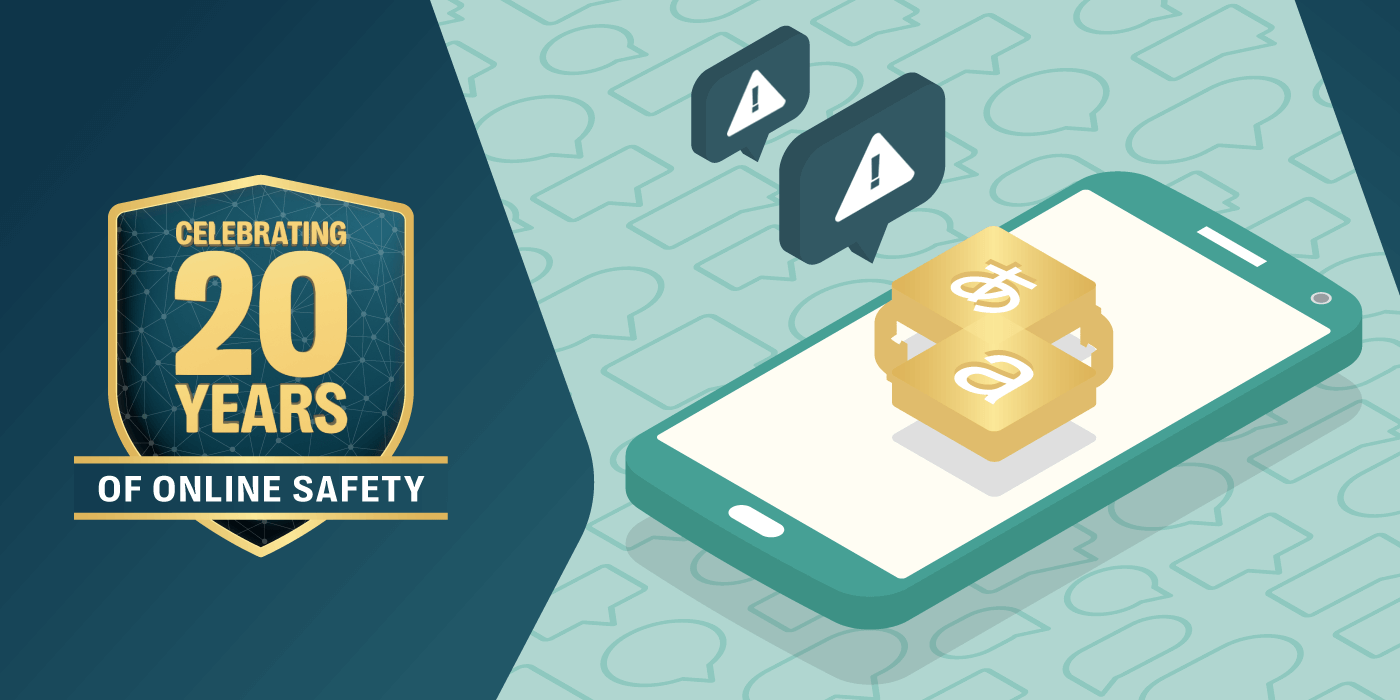This is the third installment in our series: “20 Years in Online Safety: Reflecting, Evolving, and Adapting,” leading up to the 20th anniversary of Resolver’s presence in the Trust & Safety community on Nov. 25, 2025. Originally launched as Crisp Thinking in November 2005, we’ve had multiple generations of online safety professionals carry the mission forward. For this series, we asked our team, managers, and leadership to reflect on the journey we’ve taken so far and the road ahead, as we continue in our core mission to protect children online.
In 2005, online safety was a relatively new and little-understood concept. Yet even then, the dangers were beginning to surface — dangers that no one could have truly grasped. The scale and simplicity of the internet’s connectivity made it possible to weaponize harm instantly, anywhere in the world. How easily it could connect an offender to a child playing a game, broadcast unimaginable violence to a global audience, or allow a terrorist or extremist group to poison the minds of vulnerable individuals online.
We realized we were facing a fundamental paradox: the illusion of a borderless world built on technology that was blind to the reality of localized harm, and designed with a single-language blind spot.
The English-only oversight
But we did see it. We understood that the internet’s promise of a borderless world concealed a harder truth — that harm is deeply local, deeply human, and too often overlooked. Our Trust & Safety team has been tackling this for the past two decades, founded with the same unwavering purpose we hold today: to protect children in a world that is operating faster, and darker than anyone can comprehend alone.
For too long, the default approach to Trust & Safety has been Anglo-centric. We have trained AI models on English-language data, written policies based on Western cultural norms, and built content moderation teams that, while skilled, often lack the deep linguistic and cultural expertise needed to understand the world beyond a Western-focused gaze.
What may merely seem a technical or geographic oversight is, in reality, a dangerous flaw that leaves billions of people vulnerable every day.
When words become warnings
The internet is not just one single place; it is an intricate mosaic of different languages, cultures, religions, and contexts. Online harms do not always announce themselves in plain English. Instead, they hide in the nuances of slang, political dog whistles, and coded phrases that are invisible to a system built on a policy or linguistic monoculture.
Resolver has seen firsthand how this linguistic blind spot can have catastrophic consequences, and how applying the expertise of native and multilingual analysts can bring about monumental results. In 2018, our systems flagged a massive spike in the Spanish phrase “caldo de pollo” — chicken soup. An algorithm saw an anomaly; our Spanish-speaking experts saw a pattern.

By understanding the cultural slang and piecing together other coded phrases, they identified it as a new keyword for sharing CSAM. This discovery was immediately reported to the National Center for Missing & Exploited Children (NCMEC) and international authorities, leading to the disruption of a vast network that shared illegal content and abused thousands of children.
The power of cultural intelligence
A year later, after a gunman attacked a synagogue in Halle, Germany, the perpetrator’s online presence was obscured by an unusual username. A phrase that seemed random to English speakers was an obvious reference to a well-known media personality to a German speaker. That single piece of cultural context was the key. With it, we unlocked a password-protected online group, uncovered the perpetrator’s identity and manifesto, identified their supporters, and provided critical intelligence to law enforcement.
These moments prove that human intelligence is a powerful tool that should be an integral part of our arsenal — not in place of technology, but working hand in hand with it.
The most sophisticated AI in the world typically cannot understand a joke in Farsi, a historical grudge in the Balkans, or the subtle shifts in slang used by an extremist group in Southeast Asia. It cannot keep up with the code switching of bilingual bad actors, nor can it discern between the “false friends” across languages. After all, a gift in English is much nicer than ein Gift in German!
Human & machine: The future of Trust & Safety
That is why our work at Resolver today is focused on fusing this essential human expertise with technology. We are building systems that are not only multilingual but multiculturally intelligent. We are embedding the knowledge of local experts into our technology, allowing us to proactively identify and neutralize threats before they can cause harm. This is how we move from reactive to proactive, from playing defense to anticipating threats.
The future of online safety is not about choosing between people and technological automation. It is about harnessing the partnership between the two. True progress comes from systems that understand language and culture as deeply as the people they protect.
At Resolver, we’re embedding that principle into everything we do. We’re fusing advanced technology with human insight to move from reactive responses to proactive, from detection to anticipation. By harnessing the strengths of both, we can spot risks earlier, interpret them more accurately, and respond with the cultural and contextual understanding that machines alone cannot provide.
Online harm is immense and complex, but the solution begins with a simple truth: to protect the global village, we must speak its many languages and understand its many cultures.
A shared responsibility to protect the global village
As we mark 20 years in Trust & Safety, our call to action for every leader in this space is this: look beyond the obvious. Challenge the English-only assumptions that blind us from harm. Look past the seemingly easy, Anglo-centric “solutions.” The real fight is in the linguistic and cultural nuance where threats hide.
The next frontier in online safety won’t be won through algorithms alone. It will take collaboration that bridges human and machine, culture and code. As we reflect on two decades of protecting children and safeguarding online spaces, we’re also looking ahead to the next frontier of Trust & Safety: the proactive, intelligent elimination of CSAM.
Resolver’s new Unknown CSAM Detection Service represents the culmination of 20 years of learning, evolving, and purpose. It’s built to identify, prevent, and remove child sexual abuse material at speed and scale, while protecting humans behind the screen.
Learn more about how we’re redefining child safety for the next generation.
More from Trust & Safety’s 20th Anniversary series:


